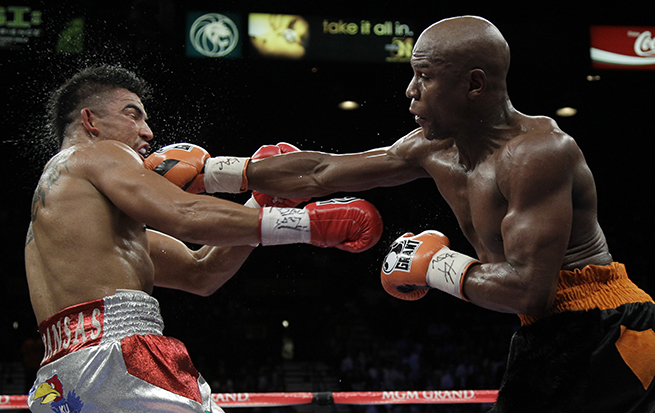Follow our PlayStation 4 coverage
[aditude-amp id="flyingcarpet" targeting='{"env":"staging","page_type":"article","post_id":621040,"post_type":"story","post_chan":"none","tags":null,"ai":false,"category":"none","all_categories":"games,","session":"A"}']It’s the laziest kind of dialogue you’ll hear in an indie film. A couple of guys sitting on a couch or at the bar will say something like “Who do you think would win a in fight, Dan Rather or Barbara Walters?” It’s a hypothetical exercise done for fun since we can’t possibly know who would really win — although, clearly Barbara Walters would.
Let’s give it a try ourselves: What would win in a fight? Microsoft’s rumored next-gen system “Durango” or Sony’s PlayStation 3 followup codenamed “Orbis”?
Eventually, we’ll know exactly which system punches harder and moves faster (Sony’s holding a major event on Feb. 20 that may involve the next PlayStation), but for now we’ll have to work from the rumored specs for each new piece of hardware. Most of this information comes from VG Leaks’, which published documentation on the Orbis and Durango in recent weeks.
Let’s get ready to force-feedback!
In this corner: PlayStation Orbis
Sony’s next system is a wrecking machine according to the data we have. It features a powerful graphics processor and the speediest memory on the market.
Here’s what we’ve heard:
- Eight-core 1.6 GHz AMD “Jaguar” CPU
- 18-core GPU based on AMD’s Radeon HD 7000 Series
- Capable of 1.843 TeraFLOPS (floating-points operations per second)
- Shared 512 KB of read/write L2 cache
- 4GB of GDDR5 RAM
- GDDR5 does 17 GB of data per second
- Around 3.5GB of RAM available to game software
- 50GB Blu-ray disc drive
And in this corner: Microsoft Durango
Microsoft’s latest gaming hardware doesn’t like a bum, either. It has an identical CPU to Orbis and a similar GPU. The graphics processor is a bit short on compute-unit cores, however, and while Durango supposedly has twice the memory of Orbis, it’s of the slower (and cheaper) DDR3 variety.
Here’s the system’s stats as far as we know:
[aditude-amp id="medium1" targeting='{"env":"staging","page_type":"article","post_id":621040,"post_type":"story","post_chan":"none","tags":null,"ai":false,"category":"none","all_categories":"games,","session":"A"}']
- Eight-core 1.6 Ghz AMD “Jaguar” CPU (same as the Orbis)
- 12-core GPU based on AMD’s Radeon HD 7000 Series
- Capable of 1.23 TFLOPS
- 32MB of fast embedded SRAM
- SRAM capable of 102GB of data per second
- 8GB of DDR3 RAM
- DDR3 does 102GB of data per second
- 6.5GB available for games
So, who wins?
I already told you: Barbara Walters.
It all depends on how you define “winning.” On paper, the Orbis is more powerful. The six extra cores in the GPU and the faster RAM could really boost visuals to a very high level if game developers take full advantage of the system’s capabilities. Most studios, though, don’t usually do that.
Games are still gonna look amazing on Durango, and while it looks like the Orbis can punch harder, Durango could outmaneuver Sony’s hardware in terms of features.
The intangibles
Orbis reportedly has 512MB of RAM reserved for the operating system and extra features. The Durango has 1.5GB of RAM set aside for the same thing.
[aditude-amp id="medium2" targeting='{"env":"staging","page_type":"article","post_id":621040,"post_type":"story","post_chan":"none","tags":null,"ai":false,"category":"none","all_categories":"games,","session":"A"}']
This is where the two systems, so similar in hardware architecture, will attempt to separate themselves from one another.
What is going on in the Durango that requires an extra gig of RAM at all times. Does a new version of the Kinect require that memory, or is it a whole suite of social and media features?
Meanwhile, 512MB for the OS sounds like Sony might skimp on ever-present software features or maybe it’s using the cloud-streaming functionality of Gaikai to pack a major wallop in a small memory footprint.
We’ll know the answers to some of these questions soon. It’s only a week until that Sony event. GamesBeat will have coverage of that and any other announcement, so stay tuned.

